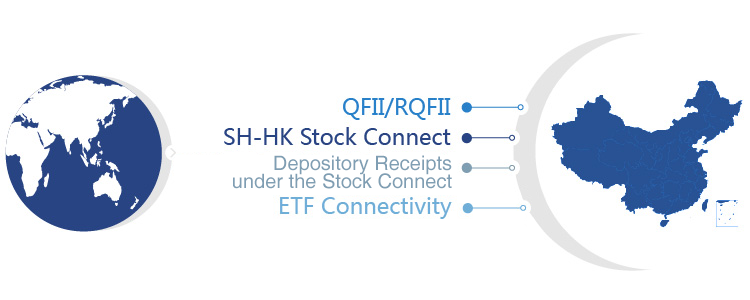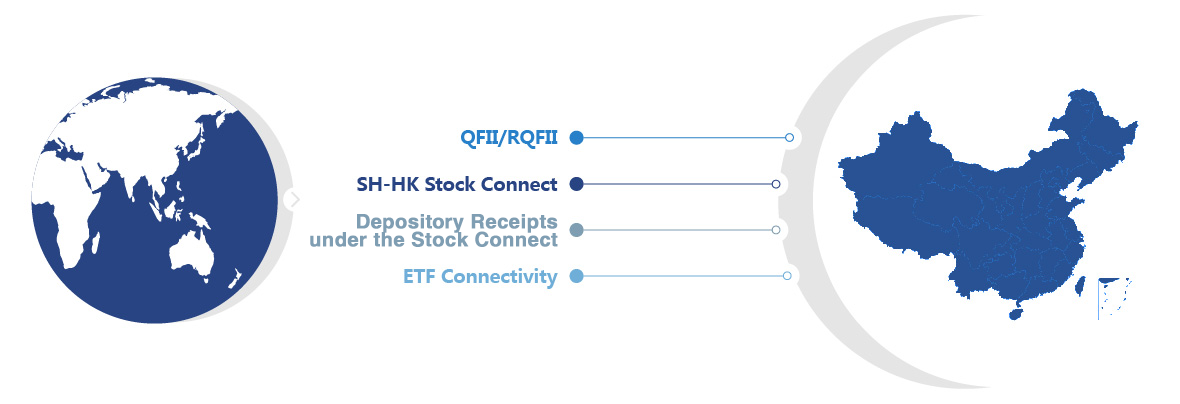

Qualified Foreign Institutional Investor (QFII) Scheme is a transitional arrangement that allows international institutional investors who meet certain qualification to participate in mainland China’s financial market. QFII scheme was introduced in 2002. As one of the first key efforts to internationalize mainland China’s financial markets, it allows the qualified international investors to directly invest in permitted range of domestic financial products within a certain quota limits. RMB Qualified Foreign Institutional Investor (RQFII) scheme was then introduced in late 2011, which allows international investors to invest using offshore RMB.
The Shanghai-Hong Kong Stock Connect was officially launched in 2014. The stock connect established a two-way trading link between Shanghai Stock Exchange and HKEX, which allows qualified mainland China investors to access certain Hong Kong shares (Southbound) as well as Hong Kong and international investors to trade certain A shares (Northbound).
The depository receipts under Stock Connect refers to the depository receipts issued and listed on the main board of SSE by qualified issuer of the underlying overseas securities (CDRs) as well as the depository receipts issued and listed on overseas stock exchanges by qualified SSE-listed domestic companies (GDRs).
The China-Japan ETF Connectivity is a scheme for creating ETFs that link the ETF markets of Shanghai Stock Exchange and Tokyo Stock Exchange. Based on QDII investment quotas specially allocated for the scheme, it enables the listing of feeder ETFs of ETFs investing in Chinese or Japanese assets listed on the other exchange.